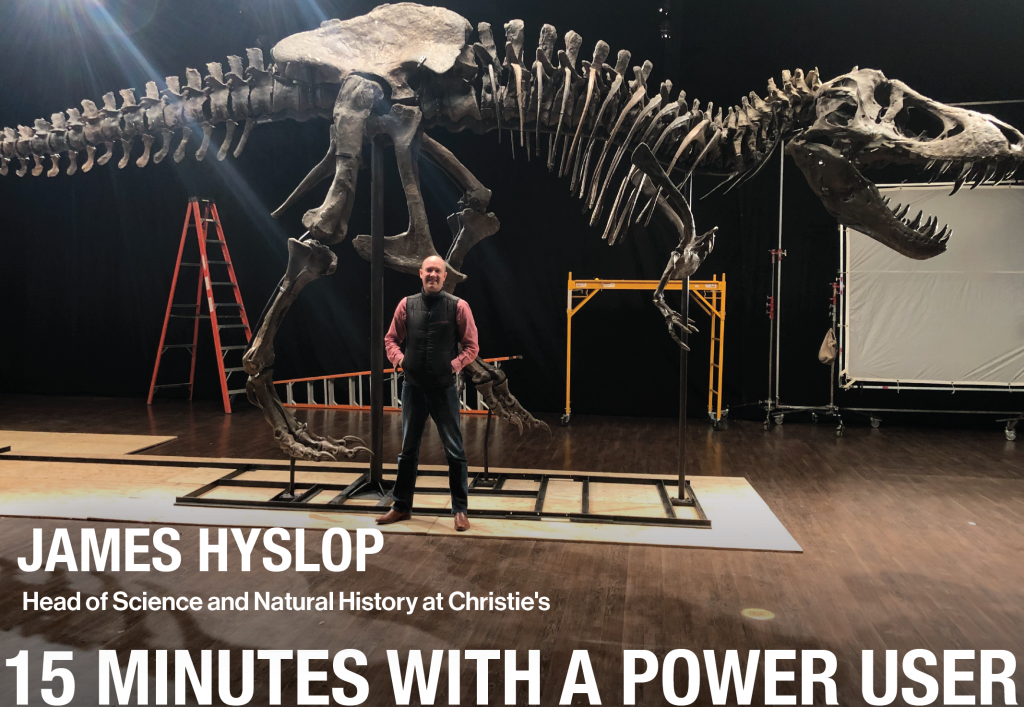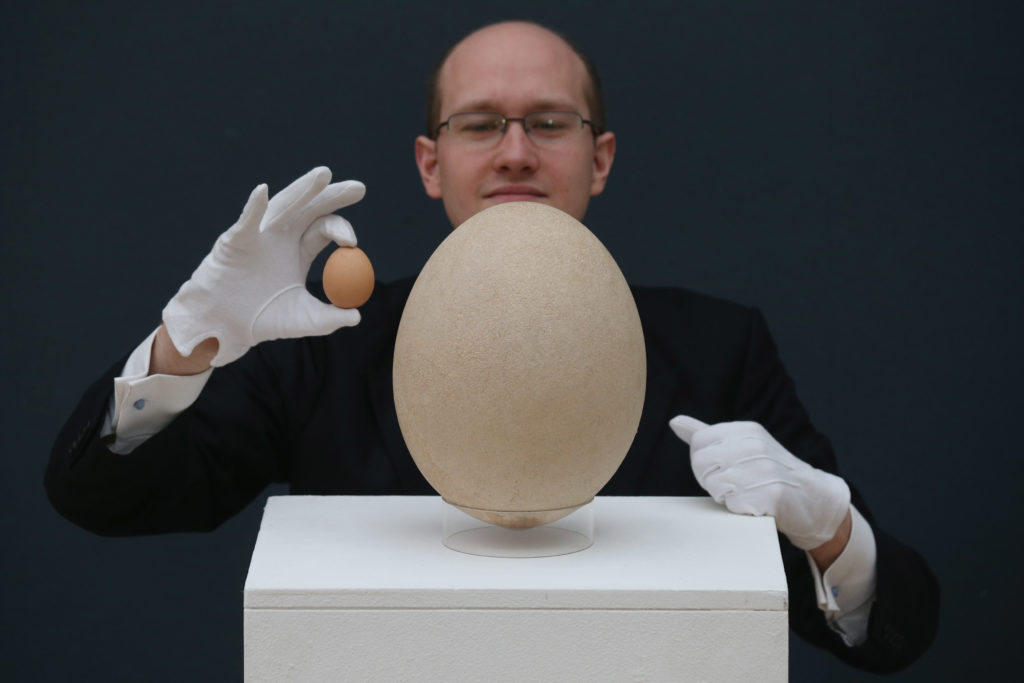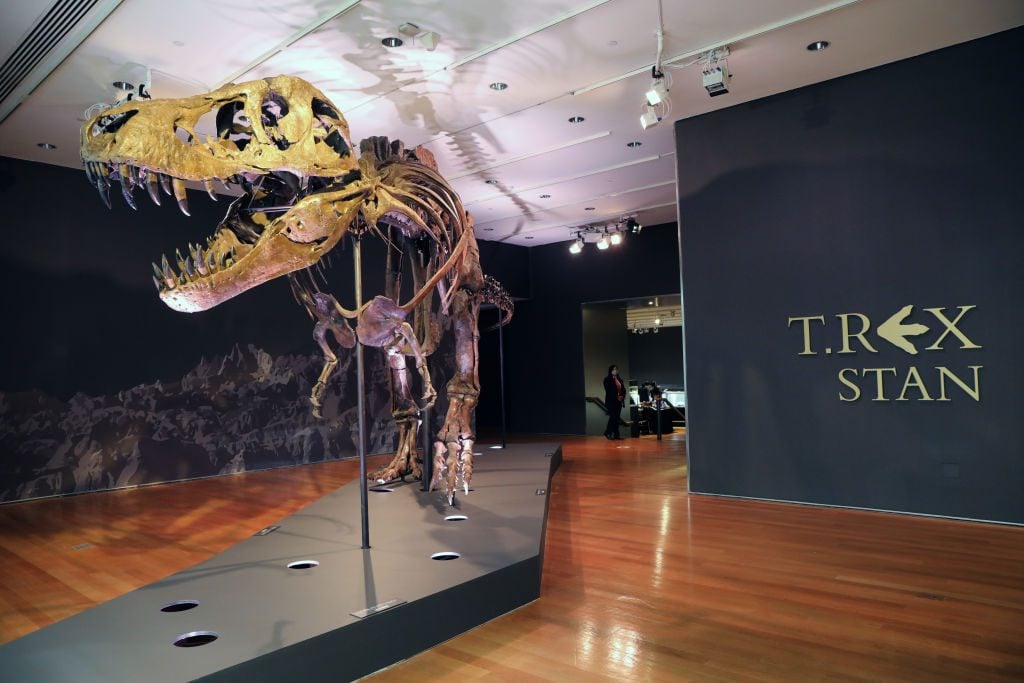People
15 Minutes With a Price Database Power User: Christie’s Head of Natural History James Hyslop on the Landmark T. Rex Sale
We spoke with Hyslop about his path from Cambridge to Christie's.

We spoke with Hyslop about his path from Cambridge to Christie's.

Artnet Price Database Team

There is only one tool trusted by art-world insiders to buy, sell, and research art: the Artnet Price Database. Its users across industries—from auction houses to museums, galleries and government institutions—represent the art world’s most important players. We’re taking 15 minutes to chat with some of the Artnet Price Database’s power users to get their take on the current state of the market and how they’re keeping up with the latest trends.
Marquee auctions at the big houses usually mean Rothkos and Picassos and Pollocks selling for upwards of $20 million. But last week, in a historic evening sale at Christie’s, a Tyrannosaurus Rex skeleton nicknamed “Stan” stole the show when it sold for $31.8 million.
To learn more about the landmark sale, we chatted with James Hyslop, the head of science and natural history at Christie’s, who placed the winning bid on behalf of Stan’s buyer. Read on to find out more about what it’s really like working with rare objects, why he thinks lots like the T. Rex are right at home in major fine-art auctions, and what he’s been searching for recently in the Artnet Price Database.
How did you end up as the head of science and natural history at Christie’s?
As part of the Natural Science Tripos at the University of Cambridge, I studied geology and the history and philosophy of science. Recently, my best friend reminded me that decades ago at school, the results from our suggested-careers survey came back suggesting for him air-traffic control—he’s a biologist—but for me, it came up with auctioneer! I’d completely forgotten, but clearly the seed was sown early.
What was your first experience with the auction market?
Before I joined Christie’s, I worked for a history of science museum in the UK with a modest acquisitions budget. Part of my job was going through dealer and auction catalogues identifying possible items of interest for the director’s approval. One particularly memorable bidding experience was on [a design by English astronomer Edmund Gunter (1581–1626)]. Little did I know when I lifted my winning paddle up in 2006 that I’d be working on the other side of the transaction within a year.

James Hyslop examines a complete sub-fossilised elephant bird egg at Christie’s. Photo by Oli Scarff/Getty Images.
Tell us about Stan the T. Rex, a dinosaur whose skeleton—one of the most complete sets of T. Rex bones ever discovered—broke records last week when it sold for $31.8 million. What do you think is the most interesting part of Stan’s story?
For years to come, Stan will be remembered for setting a new record price at auction. He takes his name from Stan Sacrison, who first discovered him in 1987. Sacrison showed the piece of pelvic bone sticking out of the earth to a scientist, who most unfortunately misidentified it as a Triceratops. It was another five years before Sacrison took a team from the Black Hills Institute of Geological Research to the site, whereupon the true identity of the fossil was realized. I will always remember [Stan] for the impact he has on you when you first come face-to-face with him. The name Tyrannosaurus Rex—the tyrant lizard king—really is appropriate.
It’s interesting that rare artifacts are now finding their way into fine-art evening sales. What precipitated this change?
The 20th-century art evening sale is one of our marquee sales at Christie’s, where we present the very best masterpieces to our clients. Certain works and objects have the ability to transcend categories, and are best suited to this environment. We saw this with the Leonardo in 2017. Despite an age of 67 million years, the T. Rex really is an icon made famous in the 20th century, and the first scientific description of one was in 1905.
Are fine-art collectors now incorporating more scientific instruments or natural history objects into their collections?
There is a long and rich association between this category and the wider art market. It was really born in the kunstkammers and cabinets of curiosity first seen in Europe, and recently these have had a revival. There are, of course, specialized collectors, but science and natural history are of such universal appeal that we see a diverse range of our clients from the fine-art market coming to this category.

Stan the dinosaur on display at Christie’s. Photo by Spencer Platt/Getty Images.
What do you look for when putting together a science and natural history sale, and do aesthetic concerns come into play?
One important aspect I look for in a fossil—which may at first seem strange for an extinct creature that has been dead for millions of years—is that it has to look alive. When the unlikely events that conspire to preserve an animal in stone do so in such a way that it looks dynamic, it appeals more to collectors.
Do you have any advice for collectors looking to break into this market?
Follow your passions. There are over 4,500 million years of history to collect in this field, and everyone will have different motivations. Also, please get in touch! Sometimes conversations about the most unlikely of juxtapositions can lead to a new market to collect in.
What do you collect personally?
I collect Golden Age detective fiction first editions, particularly association copies of my favorite authors.
What was the last thing you searched for in the Price Database?
Eric Gill‘s sculptures.